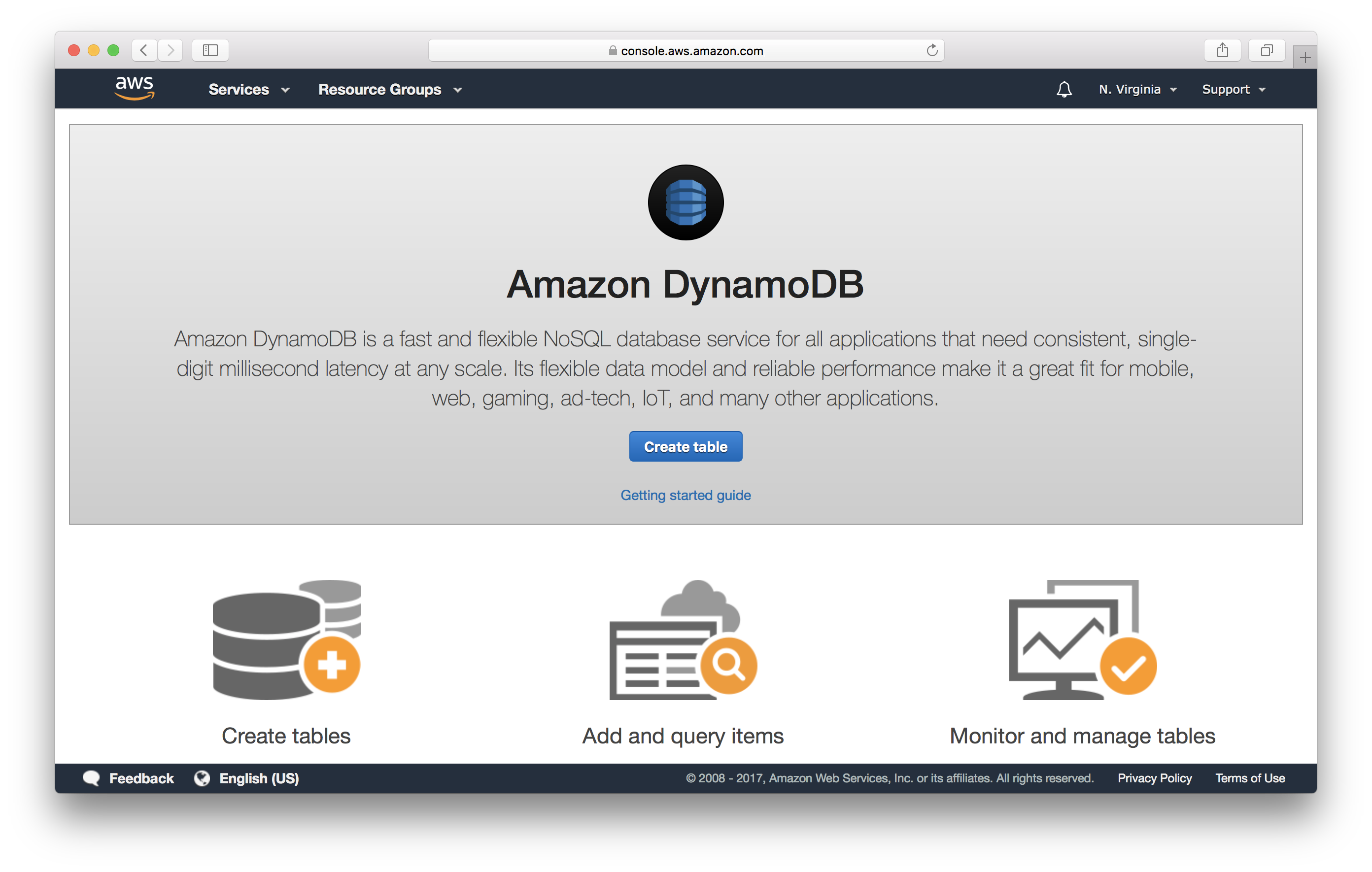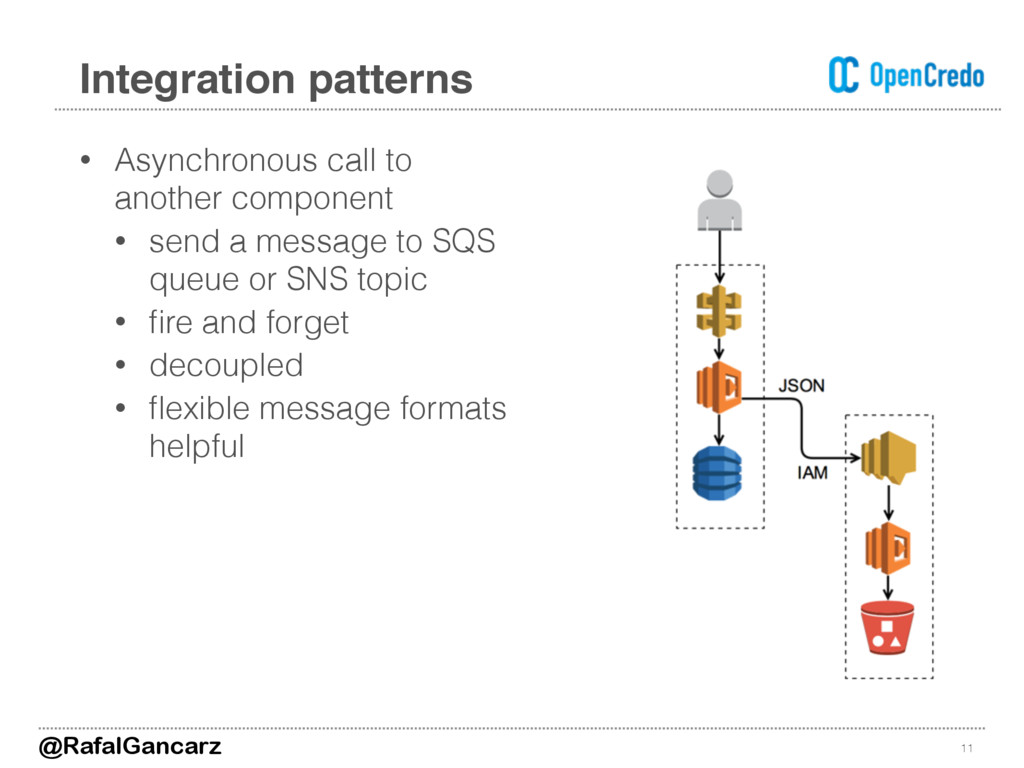

- #Serverless naming camelcase how to
- #Serverless naming camelcase install
- #Serverless naming camelcase pro
- #Serverless naming camelcase code
But in case you want it, you can use serverless-offline. Go to then Pin: Running “Middy Server” Locally/Offline (Not Recommended) Pin your workspace on Gitpod so you won’t need to reconfigure your workspace again. That’s why using a cloud IDE is recommended! Tip: Pin Your Gitpod Workspace And that will be pretty fast, especially if you use a cloud IDE like Gitpod. Now, every time you change a function, you can choose the lambda function then press “d” to deploy only that function. Now run sls-dev-tools: yarn sls-dev-tools
#Serverless naming camelcase install
Install sls-dev-tools in your project: yarn add -dev sls-dev-tools However, this should be offset by more developer productivity -> faster feature-to-market!ĭo an initial deploy of your project: serverless deploy -s dev The cons: Having a remote development environment does cost money. some services like MongoDB Realm, AWS SQS, Twilio, etc., just can’t run locally anyway.
#Serverless naming camelcase code
no need to be confused with “it works on my machine” problem, since the code always runs on a remote cloud environment with dev-prod parity (12 factor). But most desirable ones are bug fixes and improvements/features can take effect immediately.  when working in the same (development) environment, it’s actually desirable to let other developer’s changes affect our work “in real time”, including breaking changes. CI tools work best when it is running alongside the developer at all times, not “separated”. requires beefy developer machines, otherwise it will slow development and make developer becomes extremely unproductive. By using a remote serverless development environment instead of local one, app configuration can be set in the remote instance. even after all of that has been configured, you’ll still need to configure. The alternative is using a remote MongoDB from local app instance, but then it will be slow. services depend to a database, like MongoDB, and setting it up and loading data is slowing development. several (micro)services that need to be running/dependencies, and configuring/running all of them slows development. replicating development environment to local takes too much time, effort, and bandwidth (developer’s slow Internet) compared to cloud environments. See Improving the serverless developer experience with sls-dev-tools | AWS Blog. development is going cloud based (Gitpod, AWS Cloud9, Realm, etc.).
when working in the same (development) environment, it’s actually desirable to let other developer’s changes affect our work “in real time”, including breaking changes. CI tools work best when it is running alongside the developer at all times, not “separated”. requires beefy developer machines, otherwise it will slow development and make developer becomes extremely unproductive. By using a remote serverless development environment instead of local one, app configuration can be set in the remote instance. even after all of that has been configured, you’ll still need to configure. The alternative is using a remote MongoDB from local app instance, but then it will be slow. services depend to a database, like MongoDB, and setting it up and loading data is slowing development. several (micro)services that need to be running/dependencies, and configuring/running all of them slows development. replicating development environment to local takes too much time, effort, and bandwidth (developer’s slow Internet) compared to cloud environments. See Improving the serverless developer experience with sls-dev-tools | AWS Blog. development is going cloud based (Gitpod, AWS Cloud9, Realm, etc.). 
When you want to do rapid development, Hendy recommends using “serverless deploy”-ing specific functions with sls-dev-tools, and not “running the server locally”. For the project itself, Hendy recommends to use this format: as const Watch & Redeploy Serverless Functions Automatically The Serverless Functions project can contain multiple functions. Install Serverless Framework CLI: yarn global add serverless
#Serverless naming camelcase how to
How to Create A TypeScript Serverless Functions Project
Uploading Multipart Form Data (NOT Binary Files). Using Serverless Framework in A Monorepo with Lerna. Get Deployment Configuration Information.  Scheduling A Function using AWS EventBridge. Running “Middy Server” Locally/Offline (Not Recommended). Watch & Redeploy Serverless Functions Automatically. How to Create A TypeScript Serverless Functions Project. MongoDB Client Library (Typegoose/Mongoose).
Scheduling A Function using AWS EventBridge. Running “Middy Server” Locally/Offline (Not Recommended). Watch & Redeploy Serverless Functions Automatically. How to Create A TypeScript Serverless Functions Project. MongoDB Client Library (Typegoose/Mongoose). #Serverless naming camelcase pro
Deploy an Ant Design Pro project to AWS Amplify. Creating Custom Elementor Plugin & Custom Elementor Widget. NestJS with Nx, Prisma ORM, MariaDB Database, and GraphQL API. Deploy NestJS-Express with Serverless Framework on AWS Lambda. API Backend Frameworks Comparison: Strapi vs Frappe (ERPNext) vs NestJS vs Meteor vs WordPress. Local WordPress/WooCommerce Development using Docker and Docker Compose. Connecting to WordPress/WooCommerce Servers. Creating Normal (Authenticated) Pages and Static Routes. Embedding React Web App Inside WordPress Plugin. Embed Ant Design Pro/React Web App inside Another Parent Webpage. Strapi GraphQL Queries and Mutations Documentation.








 0 kommentar(er)
0 kommentar(er)
